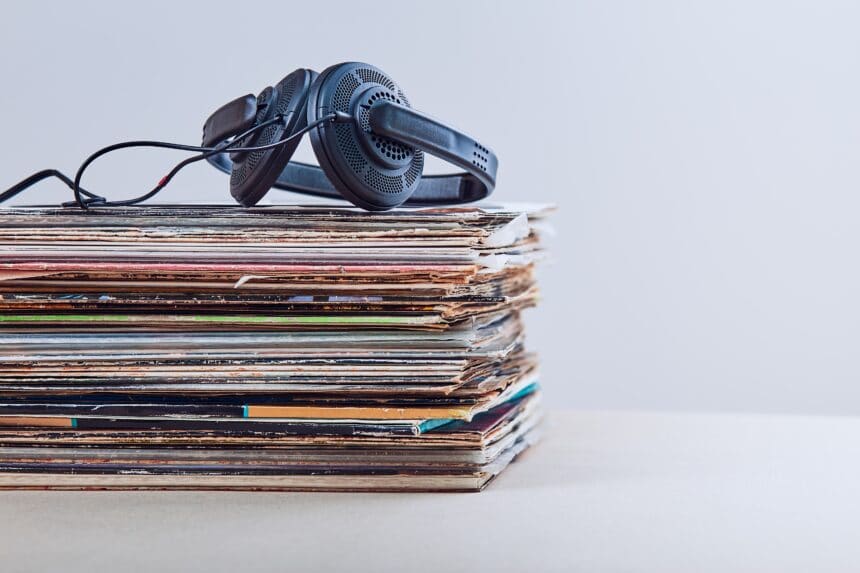Are scratched vinyl records worth anything? This is the age old question we, as record stores, hear time and again! But, before you discard those well loved 33’s & 45rpm’s you fear to be destined for the dustbin, let’s take a closer look at what value is actually left in a scratched record and all of the different factors that can lead to those scratches in the first place, allowing you to better prepare your own collections from facing fear inducing scratches.
The word scratched is never a positive indicator for record collectors and sellers alike. However, there is definitely some over-use of the word in the world of vinyl and oftentimes, you can observe what may have been labeled a “scratch”, register almost nothing during playback. However, there are undeniable instances where this is not the case, none more so than a surface mark that you can feel with your finger. These deep scratches are typically a sign that irreparable damage has occurred, with scratches more often than not, running against the grain of the grooves, subsequently causing consistent audible ticks, pops & skips, as the needle on the tone-arm of your turntable glides over them.
Contrary to some beliefs, these scratches are now a part of the album. No amount of record cleaning, toothpick dentistry, fine sand paper tricks or magic-potions will bring them out and sadly these are the types of problems that really can bring the value of a record down and cause many record collectors to look elsewhere!
When it comes to a high end listening experience, we’d all prefer a beautiful glossy, immaculate and untouched playing surface.
But let’s face it, in the world of used records (and in some cases, new albums too!) that’s never quite the reality and we all have to make decisions about what is a passable surface when it comes to our own musical palettes and want-lists!!!
Like I’ve already said, it goes without saying that a scratch running the diameter or radius of a piece of vinyl album renders it inoperable to most collectors & listeners. But that’s just it, what collectors and type of listeners are you dealing with? This truly is what can determine the value of damaged albums. A scratched record with a beautiful, crisp jacket, with all it’s inserts, company inner sleeve and shrink wrap could still be the exact ticket someone has been looking for, especially if it’s a sought after record that someone has spent a long time trying to find.
Now, don’t get it twisted, an album from the 70’s that was pressed a million times isn’t going to have itself saved by being completely clean aside from the big scratch on Side B! But still, I believe that above all else, it comes back to the tolerance, taste and value in that given record to each individual and you may find that someone might be willing to live with a few ticks at the beginning of a song….although their stylus may have something else to say about that!
Dealing with scratched records is one thing, but there are also many ways to avoid scratching them in the first place and vinyl records are prone to collecting everything from dust to grease. Simply storing your LP’s and 45rpm records correctly can be a great start in avoiding scratched records. Keeping the inner sleeve inside with the opening at the top, is a surefire way to greatly reduce dust getting to the vinyl, one of the biggest culprits when it comes to scratched records. Then the inner sleeve itself can play a part in the upkeep, with some paper sleeves increasing “bag rash” and stress markings. Opting for a poly-lined sleeve will help maintain the sound quality of your record and keep your listening experience a positive one! In addition, there are also many cleaning solution products on the market these days from your basic microfibre cloths to the highest end Ultrasonic cleaners, blasting records with millions of little bubbles to lift dirt from the surface to the smallest nooks of a record groove, helping to extend the light of a record.
If a groove is dirty, then the greater the chance that a needle will pop out and skip over the playing surface. And although this won’t necessarily damage your stylus, it increases the risk of damaging your record further. However, where scratches themselves won’t harm the stylus, consistently playing dirty albums on your record player can definitely add wear to a needle, so we can’t recommend enough that you try and maintain proper storage and cleaning habits with your record collection. And with regards to the stylus (or needle), this is one of THE key components for getting the music on your vinyl into your ears. Keeping that needle clean will pay dividends each time you drop the needle. There are now many affordable, high-quality options available to keep that needle pristine and ready to go.
Overall, when we look at the extremes of scratched vinyl records and meander back across the spectrum of deep scratches, surface marks, blemishes, imprints and imperfections, a little knowledge can really help you as a record collector and listener, to make better decisions when both buying & cleaning records, leading to empower you on your quest building your dream record collection.
And ultimately, even with all the different scenarios of the playing surface of a record, from “bag rash” to pressure & stress marks and those pesky cobweb-like hairline marks that always seem to induce concern, when you drop that needle let the reason you were there in the first place raise above all else: the music.



Leave a Reply